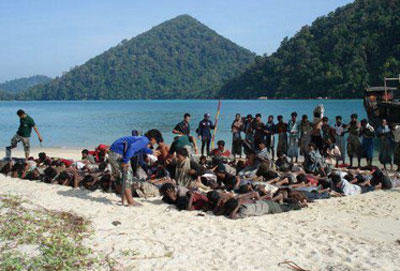The word oppression comes from the Latin opprimere which means “pressed down.” It depicts abuse of power by people in authority. It means ill-treatment of people in a manner that is cruel or unjust. There are different forms of oppression. However, social, economic and political forms are more popular and dominant (Deutsch, 2006). Globally, oppression is widespread. This paper outlines social oppression in the health setup.
Origin of Oppression
Oppression was not part and parcel of ancient societies because they lived communal lives. However, oppression continues to characterize modern societies since the inception of individualism, especially in control and ownership of resources (Cudd, 2006). Before the advent of agriculture, societies depended on hunting and gathering for food supply.
They shared food amongst each other, and were cooperative in looking for food. They did not aim at acquiring and accumulating wealth, but worked together and shared the benefits of working together. There were remarkably few conflicts in these societies.
As populations expanded, there was a need to increase food production. Therefore, communities developed an urge to expand their territories. This often led to inter-community conflicts, resulting to split of groups along ethnic boundaries.
Agricultural advancements, which brought better tools of farming, as well as improved agricultural techniques followed thereafter. Communities that were powerful in terms of numbers and weapons staged warfare against the other communities (Cudd, 2006). After successful battles, they took control over their agricultural and pastoral lands, thereby leading to more conflicts and rise of oppression.
Pictorial Examples of Oppression
Example 1

Source: Story, CNN’s Jessica Ravitz. Photography & Video, CNN’s Edythe McNamee. SAVING Aesha. Web.
This is a picture which made it to the cover of Time Magazine on August 9, 2010, in Afghanistan. It got posted on the internet in May 2012. It shows a woman with a prosthetic nose. Her name is Bibi Aesha. She ran away from home at one time. She was running away from her husband’s physical and emotional torture, which was common through domestic violence.
Her husband, as well as in-laws, took the law into their arms and laid an ambush on her (Ravitz, 2012). They hacked off her nose as well as the ears, as a way of punishing her for running from home. Later on, they left her to die and ran away from the scene of the accident.
Aesha’s condition affected her health in a major way. She had to nurse her wounds for a long time, and she suffered from psychological torture because of the ordeal. She also faced lack of acceptance by many communities. This is a form of social oppression targeting women in society, and it should be dealt with immediately.
Social oppression in Afghanistan is at the highest peak. It mainly targets women, and this often leads to diverse effects on their health. Such forms of oppression are not new in many countries, in the world.
Often we hear of women being gang raped by security officers as a form of showing their power (macho image) over women. Similarly, when two communities fight, men from the enemy side usually target women during retaliation. The case is more or less the same in families (Young-Bruehl, 1996).
Domestic violence is common in many families since many societies view wife battering as a way of disciplining women. In fact, some women readily welcome it and have accepted it as part of their lives.
Aesha told her story to one journalist in New York as she sought the services of Women for Afghan Women Organization, in the United States. This is a grass-root organization which promotes equal treatment for men and women. It seeks to empower women and girls of Afghanistan to achieve their goals in life (Ravitz, 2011).
Aesha visited the organization’s offices in 2010 after living in Kabul for nine months. She was seeking psychological guidance, as well as reconstructive surgery.
Example 2

Source: Burma killings: Indian organization to protest Muslim massacre. Web.
This is a picture showing men paraded for murder. They are lying down on the sand as they await their death (Singh, 2012). One can see security officers around them to guard against escape. One can see a security officer stepping on a man. They are part of the Rohingya Muslims, an oppressed ethnic minority group in the country.
They face death, torture and arrest from the Rhakine Buddhist community, who are the majority in the country (Baroud, 2012). The Burmese government has done nothing to stop this torture; instead it supports the Buddhists against the Muslims. This is a form of social oppression targeting the minority group (Singh, 2012). The media also does not care much about this torture. They allocate little time to broadcast these ethnic clashes. On 4th July 2012, Reuters declared that the Rohingya ethnic group faces a lot of discrimination in the world.
Burma has a poor political reputation in the world (Baroud, 2012). Oppression is not a new term in the country. There have been massive killings in the country from time to time, especially due to the use of the country as the main fighting ground by the great powers in the Second World War.
The Rohingyas continue to suffer, and there are no regional or international bodies committed to looking into their plights. Ironically, the security officers who should give them security in the country are the ones parading them for death. They must be experiencing psychological and emotional torture due to the killings.
In summary, oppression is common among people in power such as doctors, government officials, and the male gender. They exercise this form of power manifestation in a way that suits their desires while infringing on the rights of others. This paper serves as an informant, showing that oppression is prevalent in many parts of the world.
References
Baroud, R. (2012). ‘Democracy’ and Slaughter in Burma: Gold Rush Overrides Human Rights. Web.
Cudd, A. (2006). Analyzing Oppression. Oxford: Oxford University Press.
Deutsch, M. (2006). A Framework for Thinking about Oppression and Its Change. Social Justice Research 19 (1) 7–41.
Ravitz, J. (2011). Saving Aesha. Web.
Singh, J. (2012). Burma killings: Indian organization to protest Muslim massacre. Web.
Young-Bruehl, E. (1996). The Anatomy of Prejudices. Cambridge, MA: Harvard University Press.